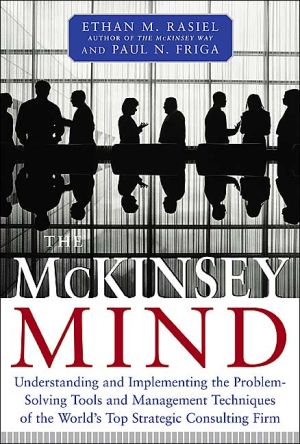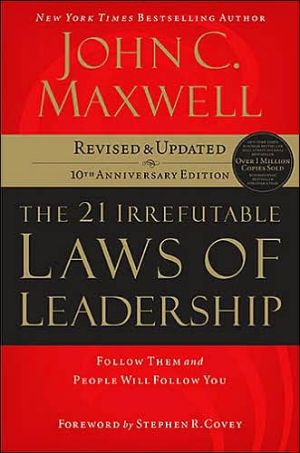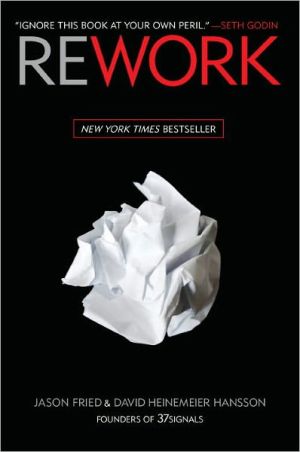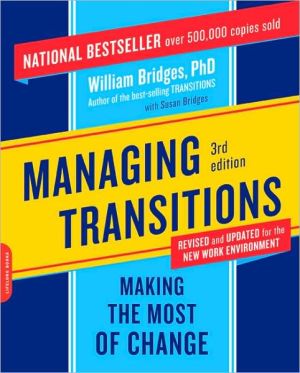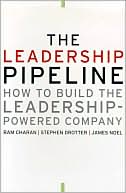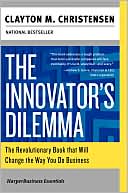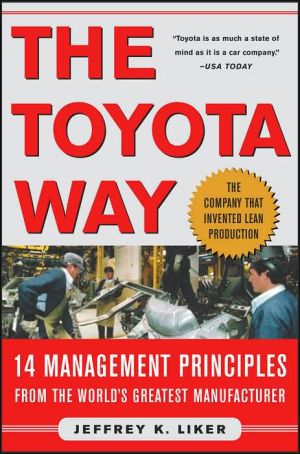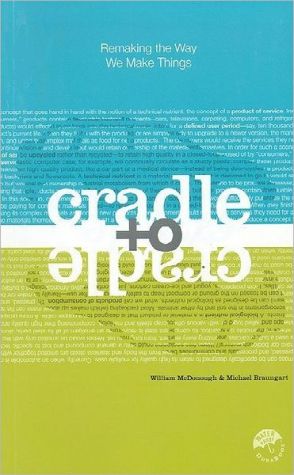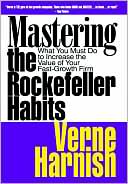The McKinsey Mind: Understanding and Implementing the Problem-Solving Tools and Management Techniques of the World's Top Strategic Consulting Firm
The groundbreaking follow-up to the international bestseller a hands-on guide to putting McKinsey techniques to work in your organization\ McKinsey & Company is the most respected and most secretive consulting firm in the world, and business readers just can't seem to get enough of all things McKinsey. Now, hot on the heels of his acclaimed international bestseller The McKinsey Way, Ethan Rasiel brings readers a powerful new guide to putting McKinsey concepts and skills into...
Search in google:
p>Nabokov's Ada: The Place of Consciousness explores the relationship between the obvious dazzle of Nabokov's style and the unsuspected depths of his thought before focusing on his richest and most surprising novel. This "stunning," "magnificent" first book by "the great man of Nabokov studies," which "provides not only the best commentary on [Ada], but also . . . a brilliant overview of Nabokov's metaphysics," has now been updated with a new preface, four additional chapters and two comprehensive new indexes.
THE McKINSEY MIND\ Understanding and Implementing the Problem-Solving Tools and Management Techniques of the World's Top Strategic Consulting Firm \ \ By ETHAN M. RASIEL PAUL N. FRIGA \ McGraw-Hill\ Copyright © 2002 The McGraw-Hill Companies, Inc.\ All right reserved.\ ISBN: 978-0-07-140554-6 \ \ \ Chapter One\ FRAMING THE PROBLEM \ The ability to frame business problems to make them susceptible to rigorous fact-based analysis is one of the core skills of a McKinsey consultant. More than that, it is the hallmark of a McKinsey-ite: if you can't solve problems in a structured, hypothesis-driven manner, you're unlikely to make it through the door of the Firm.\ The McKinsey problem-solving process begins with the use of structured frameworks to generate fact-based hypotheses followed by data gathering and analysis to prove or disprove the hypothesis. A hypothesis greatly speeds up your quest for a solution by sketching out a road map for research and analyses that will guide your work throughout the problem-solving process, all the way to the presentation of your solution. Given the value of this methodology to Firm alumni in their post-McKinsey careers, we begin with an examination of ways to adapt that process to businesses beyond the Firm.\ In this chapter, we will show you how to apply structure to your business problems and how to go about devising initial hypotheses that will speed up your own decision making. Because structure is the basis for the McKinsey problemsolving process, let's start there.\ STRUCTURE\ Although McKinsey & Company often uses the term fact-based to describe it, the McKinsey problem-solving process begins not with facts but with structure. Structure can refer to particular problem-solving frameworks or more generally to defining the boundaries of a problem and then breaking it down into its component elements. With either approach, structure allows McKinsey consultants to come rapidly to grips with the issues facing them and enables them to form initial hypotheses about possible solutions. The benefits of structure transfer readily beyond the confines of the Firm, as our alumni have shown. The facts, as we will see, come later.\ THE McKINSEY WAY\ Let's start by summarizing the ways McKinsey consultants apply structure to their business problems.\ Feel free to be MECE. Structure is vital to McKinsey's fact-based problem-solving process. For McKinsey-ites, structure is less a tool and more a way of life. One Firm alumnus summed up his McKinsey experience as "Structure, structure, structure. MECE, MECE, MECE." The concept of MECE (pronounced "mee-see" and an acronym for Mutually Exclusive, Collectively Exhaustive), is a basic tenet of the McKinsey thought process. Being MECE in the context of problem solving means separating your problem into distinct, nonoverlapping issues while making sure that no issues relevant to your problem have been overlooked.\ Don't reinvent the wheel. McKinsey has leveraged its experience with structured problem solving through numerous frameworks that help its consultants rapidly visualize the outlines of many common business situations. Your organization may have its own frameworks, and you should take advantage of them if possible. Otherwise, develop your own problem-solving tool kit based on your experience.\ Every client is unique. Frameworks are not magic bullets. McKinsey-ites know that every client is unique. Simply trying to squeeze every organization's problems through the appropriate frameworks will only get you so far. If anything, this lesson is doubly true for McKinsey-ites once they leave the Firm.\ LESSONS LEARNED AND IMPLEMENTATION ILLUSTRATIONS\ How does McKinsey's structured problem-solving approach fare beyond the specific conditions of the Firm? Extremely well. Our discussions with McKinsey alumni have led us to several specific conclusions about the suitability and adaptability of structured thinking:\ Without structure, your ideas won't stand up.\ Use structure to strengthen your thinking.\ Let's see what these lessons look like in practice.\ Without structure, your ideas won't stand up. Think about your company and the way you and your colleagues formulate and present business ideas. Do you use a consistent structure or at least emphasize the need for internal coherence and logic in your problem solving? Or do people usually arrive at decisions ad hoc, without a recognizable structure or factual support? When McKinsey-ites exit the Firm, they are often shocked by the sloppy thinking processes prevalent in many organizations.\ Most of us are not blessed from birth with the ability to think in a rigorous, structured manner; we have to learn how. Unfortunately, that skill is not part of most university curricula, and few companies have the resources or the inclination to teach it to their employees. McKinsey and some other strategy-consulting firms are exceptions to this pattern. Even some of the most highly regarded companies in American business don't always stress structured problem solving, as Bill Ross learned when he joined the Transportation Division of General Electric:\ GE people move quickly when new situations arise. It's part of the culture. The mind-set seems to be "once we have identified an issue, let's wrestle it to the ground and move quickly," and they're great at doing it. Rarely do people take the time to examine the issue and develop a clear plan of action. The structured approach really surprises a lot of people. I think just focusing people on that has allowed me to add value.\ Many highly successful organizations don't apply structured thought even to their core competencies, as Paul Kenny describes at GlaxoSmithKline:\ From a scientific point of view, a lot of the research organization is rather serendipity led: you invest in research, you may have a direction, but often that direction will change as a result of information you find. Some of the best drugs on the market today were found more by luck than by design. Then, thinking back, we realize that we could have redesigned these clinical trials in a way to shape the product more appropriately for the market. There are concrete examples of ways to increase value by making more-commercial marketing decisions earlier on in the pipeline, and designing products from the very beginning to have the right characteristics, rather than just letting them evolve from the R&D pipeline however they emerge.\ If structured thinking is hard to find at GE and GlaxoSmith-Kline, two of the world's most respected and successful companies, one can imagine that it may be a pretty rare coin in many organizations.\ Further complicating matters, the corporate cultures of some organizations have been imbued with the wrong types of structure. In another example from GlaxoSmithKline, a linear, deductive thought process got in the way of sound decision making:\ We have a project leader who wants to switch his drug from its current twice-a-day formulation to a once-a-day formulation. The drug is at an early stage in research, and it's a standard rule that once a day is better than twice a day. It's easier for people to take, so ultimately there's a market-driven push to develop the once-a-day dosage. He has presented this as a binary decision: either we invest in it, or we don't. But the idea of thinking through the various options that might really be possible in a MECE way, opening out all the possibilities and then considering or rejecting them independently, hasn't really occurred to him.\ In fact, there are a number of options, including launching as a twice-a-day formulation, getting through a lot of the development risk that way, then moving to a once-a-day formulation once the drug has proved efficacious and marketable. Taking the all-or-nothing approach may not necessarily be the best way to create value; the incremental sales may not be worth the incremental costs and risks.\ Between inappropriate thinking processes and the complete absence of structured thought, there appears to be a lot of room for someone with a McKinsey Mind to add value.\ Use structure to strengthen your thinking. In all sorts of places—whether huge corporations, new economy start-ups, or even nonbusiness organizations such as nonprofits and government agencies—McKinsey-ites have been able to apply structured thinking in ways that allow them to add value to their organizations. For example, making strategic decisions requires understanding the capabilities of your organization and how to utilize those capabilities to maximize performance. That's what Jim Bennett did during his tenure as chairman of retail banking at Key Corp.:\ I became chair of the retail bank at a time when we really needed to grow our operation. It was a third of the company, and we had to grow at 10 percent per year for the rest of the company to do well. I had to determine whether that was possible or not. Of course, this depended on understanding how good we were. The only way I could come to grips with that was to lay out an issue tree. By the time I was done, I had a MECE issue tree with all the branches covered by yes/no questions. That proved very useful to me as the line manager and chief strategist of Key Corp.'s largest business in making sure that we were on the right track with our performance improvement program.\ I did it myself and then exposed others to it and the general idea behind it. The issue tree in and of itself probably strikes people as a bit "consultanty," but when I've been able to translate it into a communicable message, it's never failed me in any setting, anywhere.\ Another example of the successful application of McKinsey frameworks in a large organization comes from Bill Ross, who was then at GE:\ The biggest "framing the problem" issue I found involved the big question, "Do we know where we are going in the long term and have we developed our growth strategy?" The answer in many cases was no. I worked individually with some of the other general managers and then actually used McKinsey to put together a workshop with the senior leadership team to talk explicitly about our growth strategy. This allowed me to start feeding them information and expose them to some of the previous frameworks that I learned at McKinsey. When they saw those, it triggered light bulbs in their heads.\ Large, cash-rich corporations might seem the ideal place to apply McKinsey techniques. After all, most of McKinsey's clients fit that description. What might surprise you, however, is how effective these same techniques can be in the short-of-cash, short-of-time, short-of-people environment of a New Economy start-up, as Omowale Crenshaw discovered at Africa.com, a Web portal for the African continent:\ * We will discuss issue trees later in this chapter.\ We had to survey the marketplace and decide how to develop products and services for our particular target markets: African ex-pats and the "Africa-interested." That meant analyzing a number of industries such as African wine, or African home-decorative accessories, furniture, and art, and making a decision as to which of them would be sufficiently attractive to our target markets. By allowing us to come to grips quickly with the market sizes, the competitive environment, the key players, etc., the structural frameworks that I learned at the Firm helped us decide which of these markets made sense for us.\ Structuring your thinking can add value outside the confines of the business world. Sylvia Mathews was deputy chief of staff to President Clinton, so she should know:\ Problem solving at the federal government level tends to be a little more complicated than in the business world, in that it involves things that are less tangible than valuation of companies, profit, loss, etc. But the same techniques still apply. When I was in charge of the State of the Union production in 1996, in August (the President delivers the State of the Union address in January), I started by doing something that I called the Pillars Project. It covered every area of the State of the Union and put all our policy examples together in the same framework and with the same approach to show what we were going to try to achieve over the second four years. We then assembled them into documents that the President and Vice President could respond to over their vacations.\ We framed the issue very clearly: What is the problem? What are its dimensions? What are we going to do? And it laid out a number of things that we could try in a limited way to increase our chances of success. We covered the various issues stemming from each problem: you might want to do something, but is it achievable, do we have the resources financially, can we get the congressional support, and what are the political ramifications?\ Now that you've seen how useful structured thinking can be in almost any sort of organization, let's discuss how you can apply it in your own business and career.\ IMPLEMENTATION GUIDANCE\ As we've seen, structured thinking is an important element in any businessperson's problem-solving arsenal. How should you use this weapon? First, you must understand that structure doesn't exist in a vacuum; you have to wield it with a goal in mind. In the context of framing and solving business problems, your goal is to bring order out of chaos.\ Today's executives and entrepreneurs have access to far more information than they can possibly use. They can manage this surfeit of data only by filtering out all but the most relevant facts. The appropriate structured framework will allow you to do this much more efficiently, thereby increasing the probability that you will arrive at a solution in a reasonable amount of time—and add value to your business. As Omowale Crenshaw observes:\ One of the things that was very clear from my McKinsey experience—and this definitely applies in an entrepreneurial environment—was that the skill set that I have allows me to make some sense of ambiguity, of all the possible paths we could take. We have limited resources and limited funds, so we can't go everywhere; we have to start following these paths one at a time. A framework helps you prioritize your options. We save so much time and energy by not going down the wrong path. That's the key. Not necessarily knowing what the right path is, but not going too far down the wrong one.\ The role of senior management in this is to structure "reality" in order to make it easily graspable. Executives do this by defining the scope of the problem at hand in order to see all its ramifications—the links to other factors and the whole scope of consequences. They can then disregard unimportant factors and concentrate on prioritizing the options available to the organization. This allows them to communicate the (potentially complex) problem and its solution in easily understandable terms, to make it clear to those who need to execute management's directives.\ We will examine gathering the data and communicating the solution in later chapters, so let's turn now to defining and simplifying the problem. In the generic approach to framing the problem, McKinsey-ites put this concept into practice by breaking the problem before them into its component elements. Why? In most cases, a complex problem can be reduced to a group of smaller, simpler problems that can be solved individually. The problems McKinsey handles are either extremely complex ("How can we maintain shareholder value in the face of competitive pressure and union demands when our core market is shrinking?") or stated so broadly as to be insoluble without further clarification ("How do we make money in our industry?"). Separating out the individual pieces of the problem will make it easier for you and your team to identify the key drivers of the problem (see Chapter 2) and focus your analysis accordingly.\ This technique works not only for business problems, but also for complex problems in other realms, such as politics. For instance, Francesco Grillo, formerly with McKinsey's Rome office, is now a public-sector consultant and policy adviser to the Italian government. He used these same techniques with great success on problems such as unemployment in the European Union, reform of the Italian electoral system, and the evaluation of the economic impact of programs funded by the European Commission.\ The most common tool McKinsey-ites use to break problems apart is the logic tree, a hierarchical listing of all the components of a problem, starting at the "20,000-foot view" and moving progressively downward. As an illustration, let's look at that fine old blue-chip firm Acme Widgets. Let's suppose that Acme's board has called your team in to help answer the basic question "How can we increase our profits?" The first question that might pop into your head upon hearing this is, "Where do your profits come from?" The board answers, "From our three core business units: widgets, grommets, and thrum-mats."\ (Continues...)\ \ \ \ \ Excerpted from THE McKINSEY MIND by ETHAN M. RASIEL PAUL N. FRIGA Copyright © 2002 by The McGraw-Hill Companies, Inc.. Excerpted by permission of McGraw-Hill. All rights reserved. No part of this excerpt may be reproduced or reprinted without permission in writing from the publisher.\ Excerpts are provided by Dial-A-Book Inc. solely for the personal use of visitors to this web site. \ \
Contents
